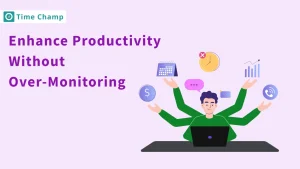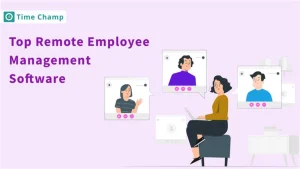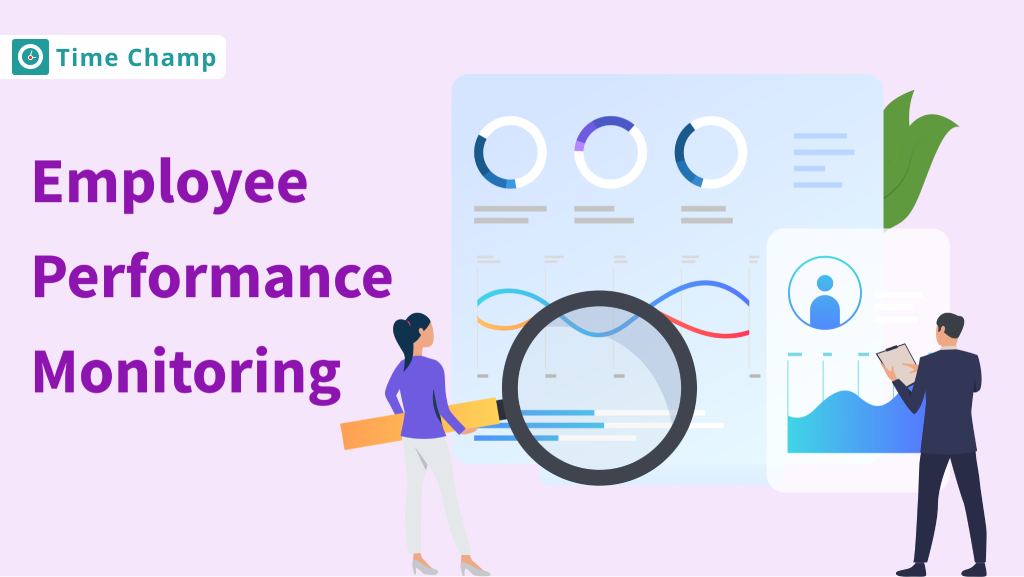Having the right employee monitoring software in place can be critical for the success of any business. It can help ensure that your employees are productive and efficient, as well as provide an extra layer of security to your business operations. Choosing the right employee monitoring software for your business can be challenging, as there are many different options available.
Employee monitoring software has become increasingly popular for companies looking to improve employee productivity and performance. With features such as employee productivity tracking and employee performance tracking, these systems offer valuable insights into how employees are spending their time on the job and can help managers identify any areas where employees could require more assistance or instruction.
Understanding the Benefits of Employee Monitoring Software
One of the key benefits of employee monitoring software is that it provides a clear picture of employee performance. By tracking employee work hours, progress on tasks, and other key metrics, managers can gain a better understanding of which employees are meeting their goals and which may need additional support. This information can be used to provide regular performance evaluations and feedback, which can help employees understand how their work fits into the overall goals of the organization and can motivate them to stay engaged.
Another benefit of employee monitoring software is that it can help improve employee productivity. By tracking how employees are spending their time, managers can identify areas where they may be wasting time on non-essential tasks or where they may need additional training to be more effective. This information can be used to change work processes, provide additional training, or implement other measures to improve productivity.
Finally, employee monitoring software can help improve the overall efficiency of a company. By providing a centralized system for tracking employee performance and productivity, managers can more easily monitor progress and make changes to improve processes. This can help reduce the time and resources needed to manage employees and can help companies stay competitive in a rapidly changing business landscape.
Comparing Different Types of Employee Tracking Systems
When it comes to employee tracking systems, there are several different types available, each with its own unique features and capabilities. These types include desktop monitoring software, network monitoring software, and keystroke logging software.
Time Tracking Systems:
- Purpose: Focuses on tracking and managing employee work hours, attendance, and time spent on different tasks or projects.
- Features: Time clocks, timesheets, clock-in/out functionality, overtime tracking, and absence management.
- Benefits: Helps with payroll processing, project costing, resource allocation, and optimizing employee time management.
- Considerations: This may not provide granular details on specific activities or productivity levels.
Activity Monitoring Systems:
- Purpose: Tracks employee activities and provides insights into how time is spent on work-related tasks.
- Features: Application and website monitoring, keystroke logging, screen recording, and activity logs.
- Benefits: Offers visibility into employee productivity, identifies time-wasting activities, and helps optimize work processes.
- Considerations: This raises privacy concerns and should be implemented with proper policies and transparency.
Project Management Systems:
- Purpose: Focuses on managing and tracking progress, tasks, and collaboration within projects or teams.
- Features: Task assignment, progress tracking, file sharing, communication tools, and team collaboration.
- Benefits: Facilitates project planning, coordination, and monitoring, improves team communication, and enhances productivity.
- Considerations: This may not provide detailed individual performance metrics or insights.
Performance Management Systems:
- Purpose: Tracks and evaluates employee performance based on predefined goals and metrics.
- Features: Goal setting, performance evaluation, feedback mechanisms, performance analytics.
- Benefits: Enables objective performance measurement, facilitates feedback and coaching, and supports performance-based incentives.
- Considerations: Focuses more on performance evaluation rather than real-time activity monitoring.
Employee Engagement Systems:
- Purpose: Measures and analyzes employee engagement levels and factors influencing their motivation and satisfaction.
- Features: Surveys, feedback mechanisms, sentiment analysis, and employee recognition tools.
- Benefits: Identifies factors affecting employee engagement, helps improve morale, and enhances overall productivity.
- Considerations: Less focused on activity tracking and more on employee sentiment and organizational culture.
Mobile Workforce Management Systems:
- Purpose: Tracks and manages employees working remotely or in the field, including their locations and tasks.
- Features: GPS tracking, mobile time tracking, task assignment, route optimization.
- Benefits: Provides visibility into remote employee activities, facilitates efficient task allocation, and enhances productivity.
- Considerations: Requires mobile device access and raises privacy concerns for location tracking.
When comparing these systems, consider your specific needs, organizational goals, and legal considerations. Determine which features and functionalities align best with your tracking requirements while respecting employee privacy and maintaining a positive work environment. Additionally, ensure proper implementation, employee training, and policy communication for successful adoption and utilization of the chosen system.
When deciding on the type of employee tracking system to use, it is important to consider the specific needs and goals of your organization. Desktop monitoring software may be the best option for companies looking to monitor individual computers, while network monitoring software may be more appropriate for organizations with a large network of computers. Keystroke logging software may be the best option for companies with specific security concerns, such as the need to monitor login credentials or password usage.
How to Choose the Right Employee Monitoring Tool for Your Business Needs?
1. Identify your specific monitoring requirements: Start by determining why you need an employee monitoring tool. Identify the specific activities or behaviours you want to monitor, such as internet usage, time tracking, attendance, productivity, or sensitive data access. Understanding your requirements will help you find a tool that aligns with your goals.
2. Consider legal and ethical implications: Before selecting a monitoring tool, familiarize yourself with the legal and ethical considerations in your jurisdiction. Understand the privacy laws and regulations governing employee monitoring. Ensure that the tool you choose complies with these requirements and respects employee privacy.
3. Research available tools: Conduct thorough research to explore different employee monitoring tools in the market. Look for reputable providers with positive reviews and a track record of delivering reliable solutions. Pay attention to the features, functionality, ease of use, and compatibility with your existing systems.
4. Evaluate features and customization options: Consider the specific features offered by each tool and assess their relevance to your monitoring requirements. Look for features like website blocking, keystroke logging, screenshot capture, application monitoring, and reports and analytics. Additionally, check if the tool allows customisation to adapt to your organization’s unique needs.
5. Scalability and integration: Consider the scalability of the tool to ensure it can accommodate your business growth. Assess whether the tool integrates with your existing systems, such as project management tools, time-tracking software, or HR systems. Seamless integration can enhance the efficiency of data collection and reporting.
6. User interface and ease of use: A user-friendly interface is crucial for the successful implementation and adoption of the monitoring tool. Evaluate the tool’s interface and navigation to ensure it is intuitive and easy to understand. Consider the learning curve for both administrators and employees who will interact with the tool.
7. Data security and privacy measures: Employee monitoring involves sensitive data, so prioritize the security and privacy measures provided by the tool. Look for encryption, access controls, data anonymization, and secure storage options. Understand how the tool handles and protects the collected data to avoid any potential breaches or leaks.
8. Cost and support: Evaluate the pricing structure of the employee monitoring tool, including any recurring fees, licensing models, or additional charges for upgrades or technical support. Consider the level of customer support provided by the vendor, such as documentation, training resources, and responsiveness to queries or issues.
9. Trial and feedback: Whenever possible, take advantage of free trials or demos offered by the tool providers. This lets you assess the tool’s suitability firsthand and gather feedback from relevant stakeholders, including HR, IT, and employees. Their input can help you make a more informed decision.
10. Decision-making and implementation: After considering all the above factors, compare the pros and cons of each tool and make a decision based on your specific needs and budget. Develop an implementation plan that includes employee communication and training to ensure a smooth rollout.
Remember, transparency and open communication with your employees about the purpose and scope of monitoring are essential for maintaining trust and fostering a positive work environment.
Making the Most Out of Your Tracking Solution to Maximize Productivity & Profitability
1. Set clear goals and expectations: Clearly define your productivity and profitability goals and communicate them to your employees. Ensure they understand how the monitoring tool intends to support those goals and improve overall performance.
2. Establish transparent policies: Develop clear and comprehensive policies regarding the use of the monitoring tool. Outline what activities will be monitored, how the collected data will be used, and the consequences of policy violations. Ensure that employees have access to this information and understand their rights and responsibilities.
3. Provide training and support: Offer training sessions or resources to help employees understand how the monitoring tool works and how to use it effectively. Address any concerns or questions they may have, and provide ongoing support to ensure they can maximize the tool’s benefits.
4. Use data for constructive feedback: Utilize the data collected by the monitoring tool to provide constructive feedback to employees. Focus on areas where improvement is needed and offer guidance on how to enhance productivity and profitability. Use the tool as a coaching tool rather than solely for disciplinary purposes.
5. Encourage self-monitoring: Empower employees to monitor their own performance and productivity by providing access to their own data. Encourage them to analyze their own metrics and identify areas for improvement. This self-reflection can promote accountability and motivation.
6. Recognize and reward achievements: Use the tracking solution to identify and acknowledge employees who consistently meet or exceed performance expectations. Recognize their efforts publicly and provide incentives to encourage further productivity and profitability.
7. Continuously evaluate and refine: Regularly assess the effectiveness of your tracking solution and make adjustments as needed. Solicit feedback from employees to understand their experiences and identify any areas of improvement. Keep up with technological advancements in employee monitoring to ensure you are using the most efficient and effective tools available.
Remember, the employee monitoring tool should be viewed as a tool to enhance productivity and profitability, not as a means to micromanage or invade privacy. By maintaining a balance between monitoring and respecting employee autonomy, you can create a positive work environment that fosters growth and success.
Get the Most Out of Your Employee Tracking Solution with Time Champ
To draw things to a close, Time Champ Software is a valuable tool for companies looking to improve employee productivity and performance. With features such as employee productivity tracking and employee performance tracking, these systems can provide valuable insights into employee performance. They can help managers make informed decisions to improve the overall efficiency of their organization.







